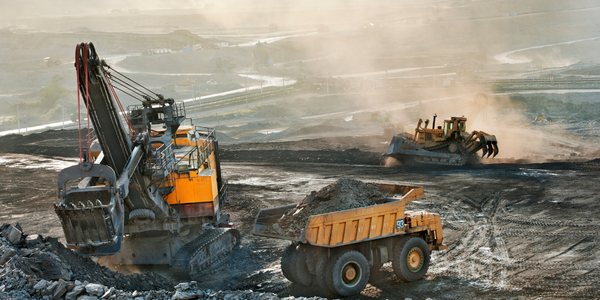Kinross Enhances Mining Operations with MicroStrategy's Mobile BI Solution
公司规模
Large Corporate
地区
- Africa
- America
- Asia
- Europe
国家
- Brazil
- Canada
- Chile
- Ghana
- Russia
- United States
产品
- MicroStrategy
技术栈
- Business Intelligence (BI)
- Mobile Application Development
实施规模
- Enterprise-wide Deployment
影响指标
- Productivity Improvements
- Cost Savings
- Digital Expertise
技术
- 分析与建模 - 大数据分析
- 功能应用 - 车队管理系统 (FMS)
- 应用基础设施与中间件 - 数据可视化
适用行业
- 矿业
适用功能
- 商业运营
- 现场服务
用例
- 车队管理
- 预测性维护
- 远程资产管理
服务
- 系统集成
- 软件设计与工程服务
关于客户
Kinross, established in 1993, is one of the world's leading gold mining companies. Headquartered in Toronto, Canada, it is the third-largest gold producer in the country. The company operates globally with mining operations in the United States, Brazil, Chile, Mauritania, Eastern Russia, Ghana, and Canada. Kinross employs over 8,000 people worldwide and is known for its commitment to operational excellence and sustainable mining practices. The company has a diverse workforce that speaks multiple languages, including English, Spanish, Portuguese, Russian, French, and Arabic. Kinross is dedicated to leveraging advanced technologies to enhance its mining operations and improve overall efficiency.
挑战
Kinross faced significant challenges in obtaining timely and accurate data for effective business decision-making. The existing systems were cumbersome, requiring extensive manual effort to maintain and often delivering outdated information. This inefficiency led to a lack of confidence in data quality and delayed decision-making processes. The company needed a more robust and efficient Business Intelligence (BI) solution that could provide real-time data access and improve overall operational efficiency. After evaluating various BI vendors, Kinross identified the need for a platform that offered speed, ease of use, mobile functionality, and cost-effectiveness. The goal was to find a solution that could streamline data collection and analysis, enabling better decision-making and reducing the time spent on manual data compilation.
解决方案
Kinross selected MicroStrategy as their BI platform of choice after a comprehensive evaluation of available vendors. The decision was based on MicroStrategy's speed, ease of use, mobile functionality, and cost-effectiveness. The company adopted a 'develop once, deploy everywhere' approach, ensuring that dashboards and reports could be accessed on both PCs and mobile devices. This mobile-first strategy significantly benefited fleet management supervisors who needed real-time data access while on the go. The mobile application allowed supervisors to input data directly from the field, leading to timely and informed decision-making. Additionally, MicroStrategy's multilingual support enabled Kinross to cater to its diverse workforce, automatically adjusting the application language based on user needs. This seamless integration of mobile and multilingual capabilities ensured that Kinross could efficiently manage its global operations.
运营影响
数量效益

Case Study missing?
Start adding your own!
Register with your work email and create a new case study profile for your business.
相关案例.

Case Study
Underground Mining Safety
The goal was to produce a safety system to monitor and support underground mining operations; existing systems were either too simple (i.e. phone line) or overly complex and expensive, inhibiting deployment, and providing little-to-no support in event of an accident. Given the dangerous nature of the mining work environment and the strict regulations placed on the industry, the solution would have to comply with Mine Safety and Health Administration (MSHA) regulations. Yet the product needed to allow for simple deployment to truly be a groundbreaking solution - increasing miner safety and changing daily operations for the better.

Case Study
Mining Firm Quadruples Production, with Internet of Everything
Dundee Precious Metal’s flagship mine, in Chelopech, Bulgaria, produces a gold, copper, and silver concentrate set a goal to increase production by 30%. Dundee wanted to increase production quality and output without increasing headcount and resources, improve miner safety, and minimize cost.

Case Study
Fastenal Builds the Future of Manufacturing with MachineMetrics
Fastenal's objective was to better understand their machine downtime, utilization, quality issues, and to embrace cutting-edge manufacturing technology/process improvement capabilities to bring their team to the next level. However, there was a lack of real-time data, visualization, and actionable insights made this transition impossible.

Case Study
Joy Mining Systems
Joy equipment faces many challenges. The first is machine integration and control. The business end of the machine has a rapidly-spinning cylinder with 6-inch diamond-studded cutting teeth. It chews through rock at rates measured in tens of tons per minute. The system grinds through the rock in front, creating a rectangular mine tunnel. Hydraulic lifters support the ceiling as the machine moves forward. Automated drills and screws drive 3-ft long screws into the ceiling to stabilize it. The rock and coal fall into a set of gathering "fingers" below the cutting cylinder. These fingers scoop up the rock and coal and deposit it onto a conveyor belt. The conveyor passes under the machine and out the back. A train of conveyor belt cars, up to a mile long, follows the cutter into the mine. The rock shoots along this train at over 400 feet per minute until it empties into rail cars at the end. Current systems place an operator cage next to the cutter. Choking dust (potentially explosive), the risk of collapse and the proximity of metal and rock mayhem make the operator cage a hazardous location.

Case Study
Improved Monitoring in Industrial Manufacturing Facility
When your crane is moving tons of magma-hot iron, you can’t afford an unexpected failure. McWane Ductile knew monitoring the crane motor metrics within their facility could help prevent a mechanical failure that would strand an enormous bucket of molten metal overhead. Unfortunately, their legacy wired monitoring system couldn’t work with moving objects in this extreme environment. If they could integrate wireless capabilities into their existing equipment they could extend their monitoring capabilities without starting over from scratch.



